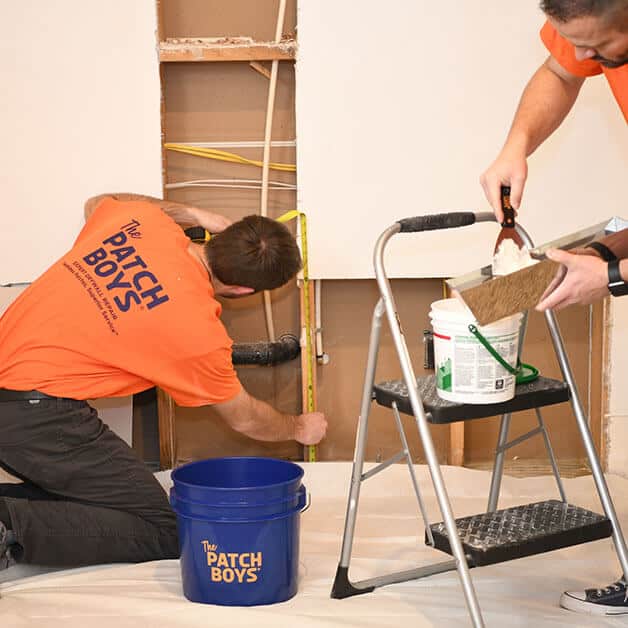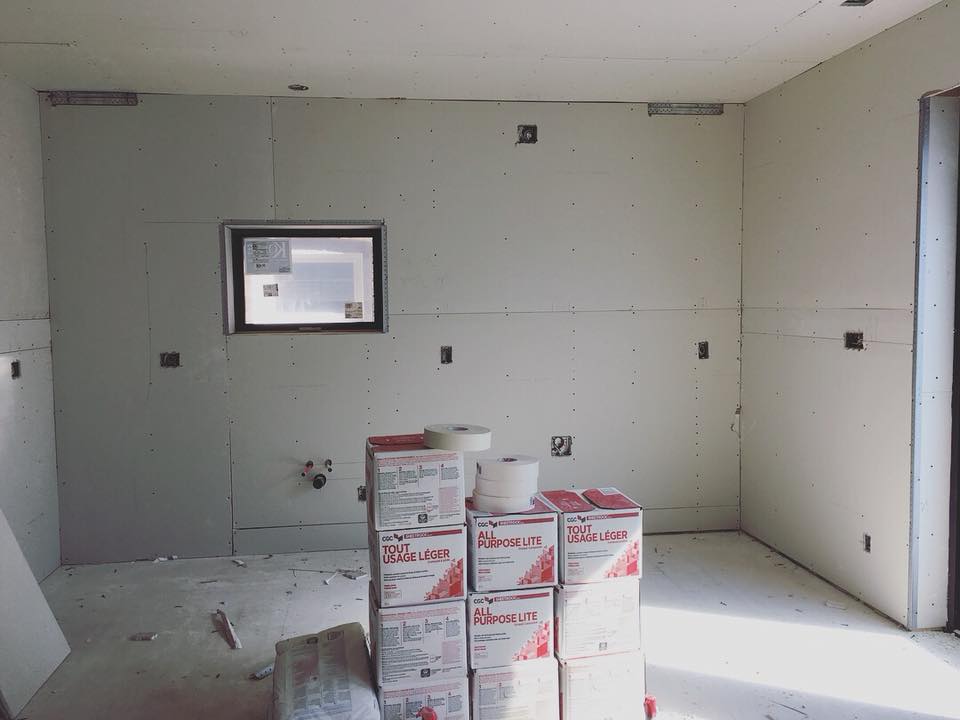Top-rated Edmonton Drywallers: Quality and Reliability
Wiki Article
Every Little Thing You Need to Know Regarding Drywall Setup: A Comprehensive Overview

Understanding Drywall Essentials
Understanding the principles of drywall is important for any type of successful setup task. Drywall, likewise recognized as gypsum board or plasterboard, is a prominent construction material made use of to create interior wall surfaces and ceilings. It is composed of a gypsum core sandwiched in between 2 layers of paper. The gypsum core supplies the necessary strength and rigidness, while the paper layers shield the core from damage and supply a smooth surface area for finishing.
One essential element of recognizing drywall is recognizing the various types available. The most typical types include routine drywall, moisture-resistant drywall, and fireproof drywall. Normal drywall is ideal for most interior applications, while moisture-resistant drywall is recommended for areas with high humidity, such as restrooms and kitchen areas. Fireproof drywall is created to supply added defense versus fire and is usually called for in business structures and multi-family houses.
An additional secret element of drywall basics is understanding the standard dimensions and densities offered. The most usual dimensions are 4x8 feet and 4x12 feet, with thicknesses ranging from 1/4 inch to 5/8 inch. Thicker drywall is commonly made use of for applications that need enhanced fire resistance or soundproofing.
Devices and Products Needed for Drywall Installation
To efficiently mount drywall, it is important to have the required devices and materials on hand (Edmonton drywallers). These tools and materials are essential for attaining an expert finish and making certain the toughness of the setupFirst and leading, you will certainly require a gauging tape to accurately gauge the dimensions of the location where the drywall will be mounted. An utility blade is important for reducing the drywall to the required shapes and size. Furthermore, a drywall saw can be made use of for making a lot more intricate cuts, such as around windows or electrical outlets.
Next, you will require a screw gun or a drill with a screwdriver bit to safeguard the drywall to the wall studs. Screws, particularly drywall screws, are essential for connecting the drywall to the studs. It is necessary to use the proper size of screws to guarantee a flush and secure setup.

In regards to materials, you will need the drywall itself, joint compound for filling out spaces and joints, and tape for enhancing the joints. Sandpaper or a fining sand block will certainly be required for raveling the joint substance after it has actually dried out.
Preparing the Room for Drywall Installation
Before waging the drywall installation, it is important to correctly prepare the area to make sure a smooth and effective setup process. Preparing the area includes a number of essential steps that need to be followed diligently.Firstly, it is crucial to clear the location of any kind of furnishings, fixtures, or other things that might block the setup process. This will provide the installers with ample room to function and navigate around. Additionally, it is advisable to cover the floorings and any type of staying items with safety sheets or go down fabrics to stop any damages or particles from falling onto them.
Following, it is very important to check the walls and ceiling for any kind of existing damages, such as cracks, openings, or water spots. These issues should be fixed before the installment to make sure a smooth and even surface area for the drywall. Any type of loose paint or wallpaper need to likewise be removed, and the wall surfaces ought to be extensively cleaned up and dusted.
In addition, electrical and pipes fixtures need to be shut off and protected to stop any type of crashes or damages throughout the installation procedure. It is important to shut off the power supply to the location and remove any type of electrical cover plates prior to starting the installment.
Lastly, it is suggested to consult with a specialist or refer to regional building ordinance to make sure conformity with safety laws and obtain any type of necessary licenses prior to proceeding with the setup. By effectively preparing the space, you can make sure a reliable and effective drywall installation process.
Step-by-Step Overview to Hanging Drywall
To ensure an effective drywall installment, it is very important to adhere to a detailed overview for hanging the drywall (drywall Edmonton). This process needs accuracy and attention to informationFirst, collect all the essential tools and materials, including drywall sheets, an utility blade, a drywall saw, a tape action, a drill, and screws.
Following, start by measuring the dimensions Edmonton drywallers of the wall or ceiling where the drywall will be set up. Transfer these dimensions onto the drywall sheets, noting where cuts require to be made - drywall installation. Use a straight edge and an utility knife to score the drywall along the marked lines, then snap it along the score line
When the drywall sheets are cut to size, they can be hung on the wall or ceiling. Start at one corner and position the first sheet up and down versus the framework. Usage screws to safeguard the drywall to the studs, making certain to leave a tiny void in between sheets for growth.
Proceed this process, working your method across the wall or ceiling. Guarantee that each sheet is level and flush with nearby sheets. Utilize a drywall saw to eliminate any necessary openings for electric outlets or switches.
Finishing Techniques for a Specialist Appearance
Currently that the drywall sheets have been successfully hung, it is vital to employ ending up strategies that will result in a sleek and specialist look. Attaining a perfect and smooth finish on drywall calls for cautious attention to information and the usage of appropriate tools and strategies. One of the primary steps in the completing procedure is to fill up the joints and screw indentations with joint substance. This can be done by using a thin layer of substance over the joints using a taping blade, and afterwards embedding drywall tape right into the compound. As soon as the tape is in area, one more layer of compound must be applied over it, feathering the sides to produce a smooth transition. After the compound has dried out, it is essential to sand the surface area to remove any type of imperfections and develop a seamless coating. A pole sander or fining sand block can be used for this function. The walls need to be keyed and repainted to complete the completing procedure. Utilizing top quality paint and using it evenly with a roller or brush will certainly ensure a expert and long-lasting finish. By complying with these ending up techniques, your drywall setup will certainly have a specialist and sleek look.Final Thought
In verdict, understanding the fundamentals of drywall installation is important for an effective job. With this extensive overview, any individual can confidently take on a drywall setup project.The most typical types consist of regular drywall, moisture-resistant drywall, and fireproof drywall. Routine drywall is ideal for a lot of interior applications, while moisture-resistant drywall is suggested for areas with high moisture, such as kitchen areas and washrooms. Screws, particularly drywall screws, are necessary for connecting the drywall to the studs. These issues must be repaired before the installment to make sure a smooth and also surface for the drywall. By adhering to these completing strategies, your drywall installation will certainly have a sleek and professional look.
Report this wiki page